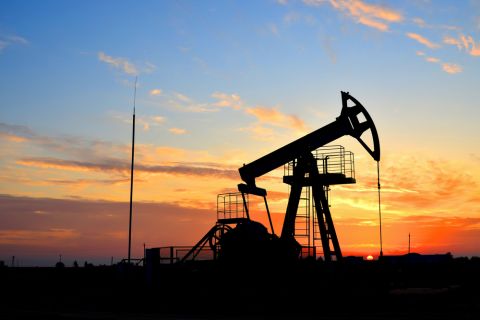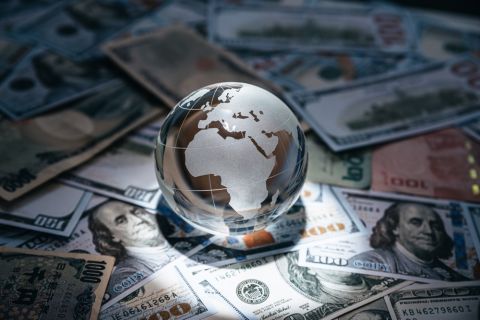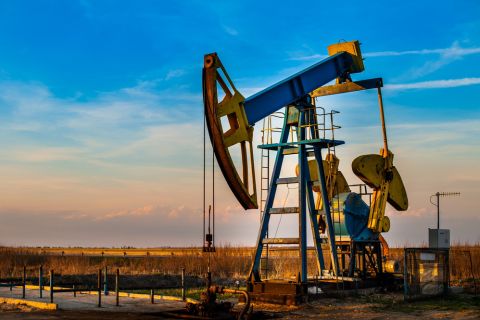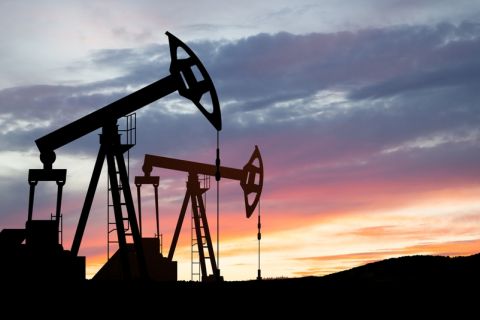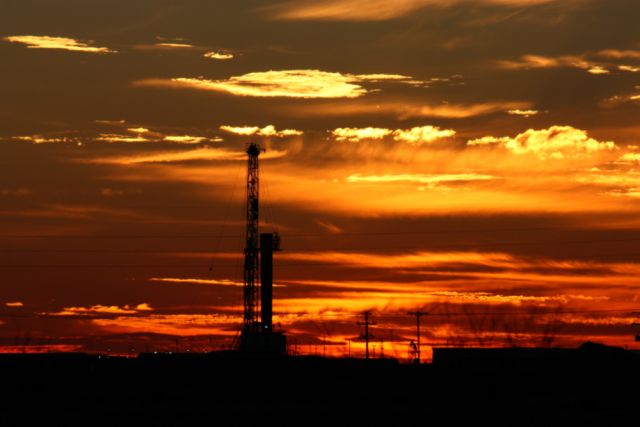
A Permian Basin rig is shown at sunset. (Source: GB Hart/Shutterstock.com)
If the oil market remains oversupplied, don’t expect EOG Resources Inc. to grow production.
“We’re a part of the solution and not part of the problem,” Bill Thomas, the company’s president and CEO, said Sept. 9 during the virtual Barclays CEO Energy-Power Conference. “We’re committed to staying very disciplined and not supplying oil into an oversupplied market.”
EOG, which reported in August its crude oil volumes dropped 27% from a year ago to 331,000 barrels of oil per day (bbl/d) in the second quarter, was among the oil companies that shut in wells as market conditions deteriorated earlier this year. Down from a peak of 107,000 bbl/d in May, shut-in volumes were expected to average about 25,000 bbl/d during the third quarter.
“We are a disciplined growth company. …The No. 1 driver on disciplined growth is the market fundamentals, and I want to be super clear on this: We are not interested in growing oil in an oversupplied market,” Thomas said.
Such discipline has accelerated throughout the industry in wake of the coronavirus pandemic, he added, applauding the efforts of others also making such moves. E&P companies have adjusted capital plans, cutting spending and deferring some projects as the coronavirus pandemic continues to impact demand and the workforce, global oversupply of oil and low oil prices.
EOG’s premium drilling strategy, which started in 2016, focuses on wells capable of earning at least 30% direct after-tax rate of return at $40 crude oil and $2.50 natural gas prices. The strategy “ensures we have strong returns and cash flow through the cycles. It maintains a very low direct finding costs less than $10 per boe, and it helps us to achieve a higher capital efficiency each year as we continue to high grade and improve the premium inventory.”
EOG has about 4,500 wells that generate a 30% rate of return at $30 flat oil prices, Thomas said. The company’s focus will be on these wells as it aims to further reduce costs and increase returns.
Attention is also on pursuing exploration opportunities.
Earlier this year, EOG said it planned to test about six prospects in 2020.
“We see a lot of opportunity for EOG to continue to get better through all these exploration efforts, Thomas said.
Fresh off a drilling campaign that resulted in the discovery of up to an estimated 1 trillion cubic feet of natural gas offshore Trinidad, EOG is continuing its exploration drive.
“We have exploration efforts going on in that kind of environment in multiple places in the world, not just in Trinidad,” Thomas said of offshore exploration in shallow water. “We’re hopeful that’ll be a meaningful part of the company. The other part is horizontal technology, and we’ve been looking for years for a meaningful horizontal play internationally. Geologically, they’re abundant. The issue is the geopolitical risk.”
However, he added the company is seeing some opportunities nowadays as deal structures are modified, making the returns in some plays—with large reserve potential—just as good as or even better than EOG’s U.S. assets.
EOG, which operates in several basins in the U.S. as well as in China and Trinidad and Tobago, didn’t share details during the virtual conference on its international exploration pursuits but mentioned that most of its new exploration plays in the U.S. are on nonfederal acreage.
“We’re really excited about our exploration effort. We believe we’re going to bring in rock quality to the company that’s better than our average quality right now,” Thomas said. “That will lower our decline rate. That will lower our F&D cost, and it’ll improve our returns going forward. I think it will continue to improve our capital efficiency, etcetera, etcetera.”
From 2017 to 2019, the Houston-based company has generated a 14% average return on capital employed and $4.6 billion of free cash flow, while increasing the dividend by 72%, lowering debt by $2.2 billion and growing proved reserve base by 55%, Thomas said.
“We have done this by only reinvesting about 80% of our discretionary cash flow back into capex,” he said.
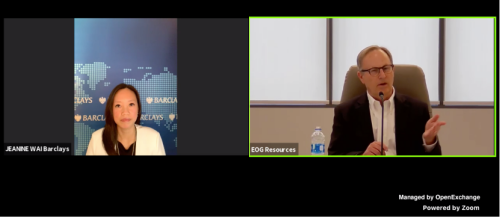
Jeanine Wai, an analyst for Barclays and session moderator, mentioned new investment frameworks of several E&Ps being backstopped by reinvestment rates between 70% and 80% with single-digit growth.
“On strip prices, we see a wall of free cash flow coming for E&P but historically it hasn’t really materialized, and I think there’s still a lot of skepticism in the market,” Wai said. “But we think that providing these formalized frameworks are a way for the market to start capitalizing on that free cash flow given the commitment.”
Wai asked whether formalization of the frameworks will be a catalyst as the industry looks to get generalist investors back in the sector.
Guidance on EOG’s framework will be given after it gets more insight into the macro outlook, Thomas said. He pointed out that there has been a structural permanent shift in the E&P space.
Earlier during their talk Thomas pointed out how many of its peers—private companies and major integrated companies alike—have switched to a more disciplined mode. He believes the approach will help modify growth in the U.S.
“We think it will help stabilize oil prices and make it a much better environment for each one of us,” he added. “The important thing to know about EOG [is] we are committed to being a part of the solution to rebalancing the market. We’re not going to grow oil in an oversupplied market.”
Recommended Reading
What's Affecting Oil Prices This Week? (Jan. 29, 2024)
2024-01-29 - For the upcoming week, Stratas Advisors forecast that increase in oil prices will be moderated likely due to the U.S. being cautious in response to the recent attack on U.S. troops.
Paisie: Economics Edge Out Geopolitics
2024-02-01 - Weakening economic outlooks overpower geopolitical risks in oil pricing.
What's Affecting Oil Prices This Week? (Feb. 5, 2024)
2024-02-05 - Stratas Advisors says the U.S.’ response (so far) to the recent attack on U.S. troops has been measured without direct confrontation of Iran, which reduces the possibility of oil flows being disrupted.
What's Affecting Oil Prices This Week? (March 4, 2024)
2024-03-04 - For the upcoming week, Stratas Advisors expect the price of Brent will move sideways and will struggle to break through $85.
Oil Broadly Steady After Surprise US Crude Stock Drop
2024-03-21 - Stockpiles unexpectedly declined by 2 MMbbl to 445 MMbbl in the week ended March 15, as exports rose and refiners continued to increase activity.


